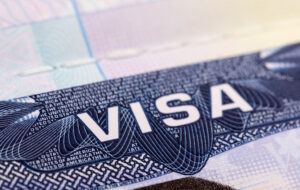New Passport photos for your New Years travel! Time to Update Your Passport Photos
Take a look at your passport. When does it expire? Is this the year you need to renew it? If so, the first

step would be to have a new photo taken. And if your passport is from a foreign country, you’re going to
be hard pressed to find someone who can provide you with photos that conform to your home
government’s standards (typically measured in millimeters, not inches).
Some things to do to bring travel into your path after you renewed your passport with your new passport
photos… do superstitions work?
New Year Superstitions and Practices from Around the World: Traditions to Bring Good Luck
As the calendar flips to a brand-new year, people across the globe partake in various customs and rituals
believed to bring good luck, prosperity, and happiness in the year ahead. While the exact traditions may
vary, one thing remains constant: the hope that the new year will be filled with success, good health, and
joy. From eating specific foods to unique ways of celebrating the stroke of midnight, let’s take a look at
some fascinating New Year superstitions and practices around the world that are meant to usher in good
fortune.
1. Spain: Eating 12 Grapes for Luck
In Spain, the clock strikes 12 at midnight, and the tradition is to eat 12 grapes, one for each chime of the
bell. This practice is believed to bring good luck for each of the upcoming 12 months. Some people even
make a wish for each grape they eat! If you manage to eat all 12 grapes before the clock finishes chiming,
you’re in for a year full of good fortune. While it might seem like a simple act, this tradition dates back to
the early 20th century and has become a beloved practice across Spain and even in other Spanish-
speaking countries.
2. Denmark: Smashing Plates for Good Fortune
In Denmark, people throw plates at the doors of their friends and neighbors on New Year’s Eve. The idea
is that breaking dishes is a symbol of ridding oneself of bad spirits and starting the new year with a clean
slate. The more dishes you smash, the more luck and prosperity you are believed to bring into your life. If
you find a broken plate outside your door, consider yourself lucky—it’s a sign that you are well-loved by
your friends!
3. Brazil: Jumping Seven Waves for Good Luck
In Brazil, people head to the beach to celebrate the New Year with an exciting ritual: jumping over seven
waves. Each wave represents a wish for the year ahead. As they jump, they make a silent wish, and it is
believed that if they successfully jump over all seven waves, their wishes will come true. This practice is
linked to the Afro-Brazilian religion of Candomblé, where the ocean goddess Iemanjá is honored, and it’s
thought that making offerings to her will bring good luck for the year.
4. Colombia: Carrying Empty Suitcases for Travel
For those who dream of traveling in the new year, Colombia has a quirky and fun tradition: carrying an
empty suitcase around the block. This superstition is believed to bring good luck and ensure that the
person will have a year full of travel and adventure. So, if you’re hoping for some new passport stamps,
grab your suitcase and take a walk!
5. Greece: Hanging Onions for Growth and Prosperity
In Greece, a popular New Year’s tradition involves hanging onions on the front door of homes as a
symbol of growth, fertility, and prosperity. The onion is a symbol of rebirth—its layers represent the
unfolding of new opportunities and experiences in the year ahead. On New Year’s Day, parents will also
tap their children on the head with the onion to wish them a year full of growth and success.
6. Scotland: First-Footing for Good Luck
One of Scotland’s most famous New Year’s traditions is “first-footing.” The first person to enter a home
after midnight is called the “first-footer,” and this person’s characteristics can determine the luck of the
year ahead. For good luck, it is traditionally thought that the first-footer should be a tall, dark-haired man,
as this is considered a symbol of prosperity. The first-footer is often greeted with whiskey and other gifts,
and the practice is a social one, bringing communities together to celebrate and share good fortune.
7. Japan: Toshikoshi Soba for Longevity
In Japan, one of the most significant New Year’s traditions is eating a bowl of soba noodles on New Year’s
Eve. The long noodles symbolize a long life, and eating them is believed to bring longevity and good
health in the coming year. In addition, many Japanese people clean their homes before the new year as a
way of purging any bad energy from the past year and welcoming in a fresh start.
8. Italy: Wearing Red Underwear for Love and Luck
In Italy, wearing red underwear on New Year’s Eve is a well-known tradition that is believed to bring love
and good luck in the upcoming year. The red color symbolizes passion and energy, and it is thought that
wearing this color will attract love and positive energy. Many Italians also celebrate by throwing old items
out of the window, symbolizing letting go of the past year’s troubles and making room for new
beginnings.
9. Mexico: The Yellow Underwear Tradition
In Mexico, the color of your underwear can influence the upcoming year. Yellow underwear is particularly
popular for those seeking happiness, wealth, and good fortune in the new year. For those looking to find
love, red underwear is the go-to choice. This fun tradition adds a little flair to the celebration and brings
a sense of optimism to the festivities.
10. Philippines: Circular Shapes for Prosperity
In the Philippines, round shapes are seen as symbols of wealth and good fortune, and they are often
incorporated into New Year’s celebrations. Many Filipinos will display round fruits, such as oranges and
grapes, on their dining tables as a sign of abundance for the upcoming year. Some people also wear
polka dots to keep the circular theme going. Additionally, it’s believed that making noise—such as
banging pots and pans or setting off fireworks—will chase away evil spirits and make way for positive
energy.
11. Finland: Melting Tin for Predictions
In Finland, an unusual New Year’s tradition is the practice of casting molten tin into cold water, which
creates different shapes. The shape that forms is then interpreted as a symbol of what the coming year
holds. For example, if the tin forms the shape of a heart, it’s thought to predict a year full of love. If it
looks like a ship, it might symbolize travel or adventure. It’s a fun and quirky way to start the year with
some lighthearted predictions.
In Conclusion
New Year’s traditions and superstitions provide a unique glimpse into the cultures and values of different
countries, with each practice reflecting a desire for good fortune, prosperity, and happiness in the year
ahead. Whether it’s jumping waves in Brazil, eating 12 grapes in Spain, or wearing red underwear in Italy,
these customs offer both a sense of connection to the past and a hopeful outlook for the future.
So, as you ring in the new year, why not try a new tradition or two from around the world? Who knows—
maybe a little global superstition will add the perfect touch of luck and joy to your celebrations!
The good news, is that if you’re in the central Florida area, you can call
Thomas Bruce Studio of Photography at 727-577-5626 and be in and out in less than fifteen minutes with sharp, professionally-lit
images that measure perfectly to your government’s passport photo specs.
Located at 2227 49th St. N., St Petersburg, Thomas Bruce Studio can accommodate
passport photo requests from ANY foreign country (over 50 different countries in just the last five years).






